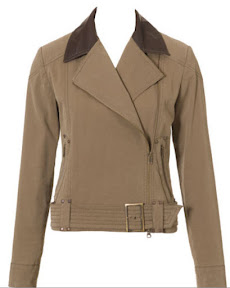It’s been a busy start in the new year, I can hardly believe it’s the last week of January already. I’ve been working long hours and my mind was occupied almost completely by programming code. On very short breaks I browsed the sewing blogs a bit, but mostly didn’t take the time to comment. But I really enjoyed reading all, it’s such a diversity of projects and inspiration.
With the finishing of a really important and time consuming work project, I hope there will be a bit more sewing time in the coming weeks. I almost felt my brain making space for sewing inspiration. After three months of sewing knits and pants, it’s time for a bit of a challenge.
Tonight I cut and altered the pattern for the Burda jacket from the December issue. I’m making a muslin first and made the following changes to the pattern:
- Traced size 40 in the shoulders, tapered to 42 for the front only. So the back will remain a size 40 in the upper half.
The sleeves were adapted too for this: front sleeve tapered down to 42 at lowest point of the sleevecap, back sleeve size 40.
I’m curious to find out what the effect of the changing of sizes front and back will be. I need the space only in the front and often jackets are too wide in the back. - Small princess seam fba (method from the book Fit For Real People)
- Tapered front and back to size 42 at hip height
- Lengthened 5 cm in the waist (I don’t like my jackets very short)
- Lengthened sleeves 2.5 cm
Now to the tile of this post: in the US patterns a clear indication line is given where to change the pattern in height to make it longer or shorter. In Burda (BWOF) there are no such lines.
Below the method I use for making the pattern parts longer, using the straight of grain lines, that are always indicated. Of course you can make them shorter using the same method shifting the pattern in the other direction.
1. This is the under sleeve, traced in the basic lines on the pattern sheet. The line with arrows is the straight grain line.
2. Mark the straight grain line at an intersecting line, this is not a line that belongs to the pattern you are tracing, just a line you use because it’s there.
3. Mark the length you want to change the pattern
4. Shift the pattern, so that the last marking is on the intersecting line you used. Make sure you keep the straigh grain line in place. Trace the pattern again in the part that you shifted to the right (or left).
5. True the seam lines
In this case there’s not a lot of difference in the seam lines, but when the seam line has a strong curve, you will have to adapt a bit more.
Do the same for the other pattern parts and make sure there you lenghten/shorten on the same level (front and back pattern for example, upper and under sleeve).
NB: when there are not a lot of intersecting lines, or no lines on the point where you want to change your pattern, mark the grain line on the pattern sheet itself, and work from there.





I never thought about it, but no Burda doesn't have the "lengthen or shorten here" lines. I always shorten things by folding out the excess after I've traced and cut out the piece. For simple stuff I just true the lines when I cut. For the more complex, I'll make another pattern piece.
ReplyDeleteI like the jacket choice - nice details and chic shape.
Thanks for describing the way you changed the sleeve and armscye - I think this might also work for me as I have a narrow back and fuller front.
ReplyDeleteI like this jacket and it will fit your lifestyle more than a more traditional type. I found that I've worn my non traditional jackets, ie motorcycle and leather jacket much more than I've ever worn my 'blazer type' jackets and we both work from home and as you've said people dress pretty casual where you live.
ReplyDeleteI finally found a jacket to base my trenchcoat on and it's, one a jacket, and will have to be lengthened and two it's a petite, so again lengthening!
Wonderful tip! Thanks!
ReplyDelete